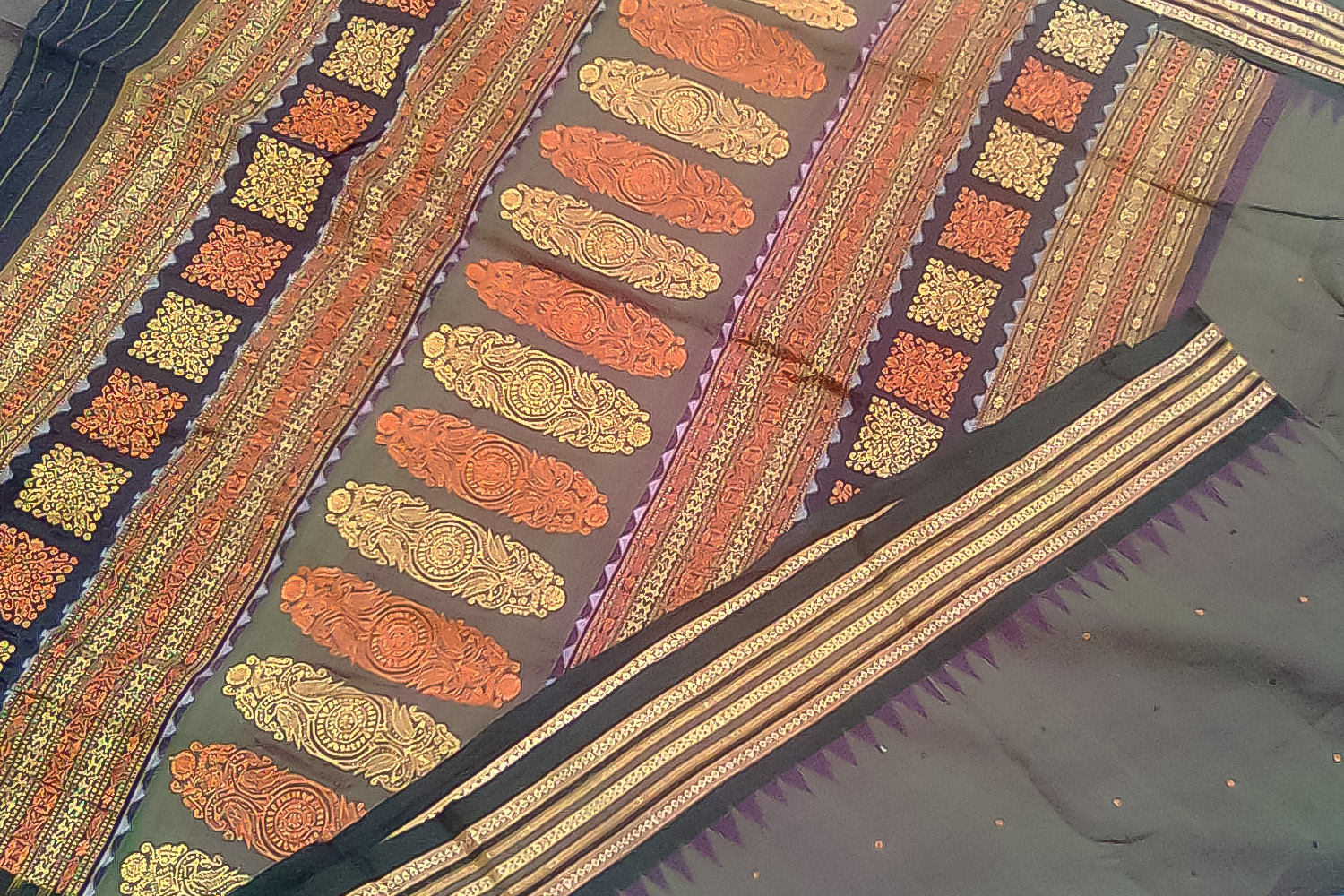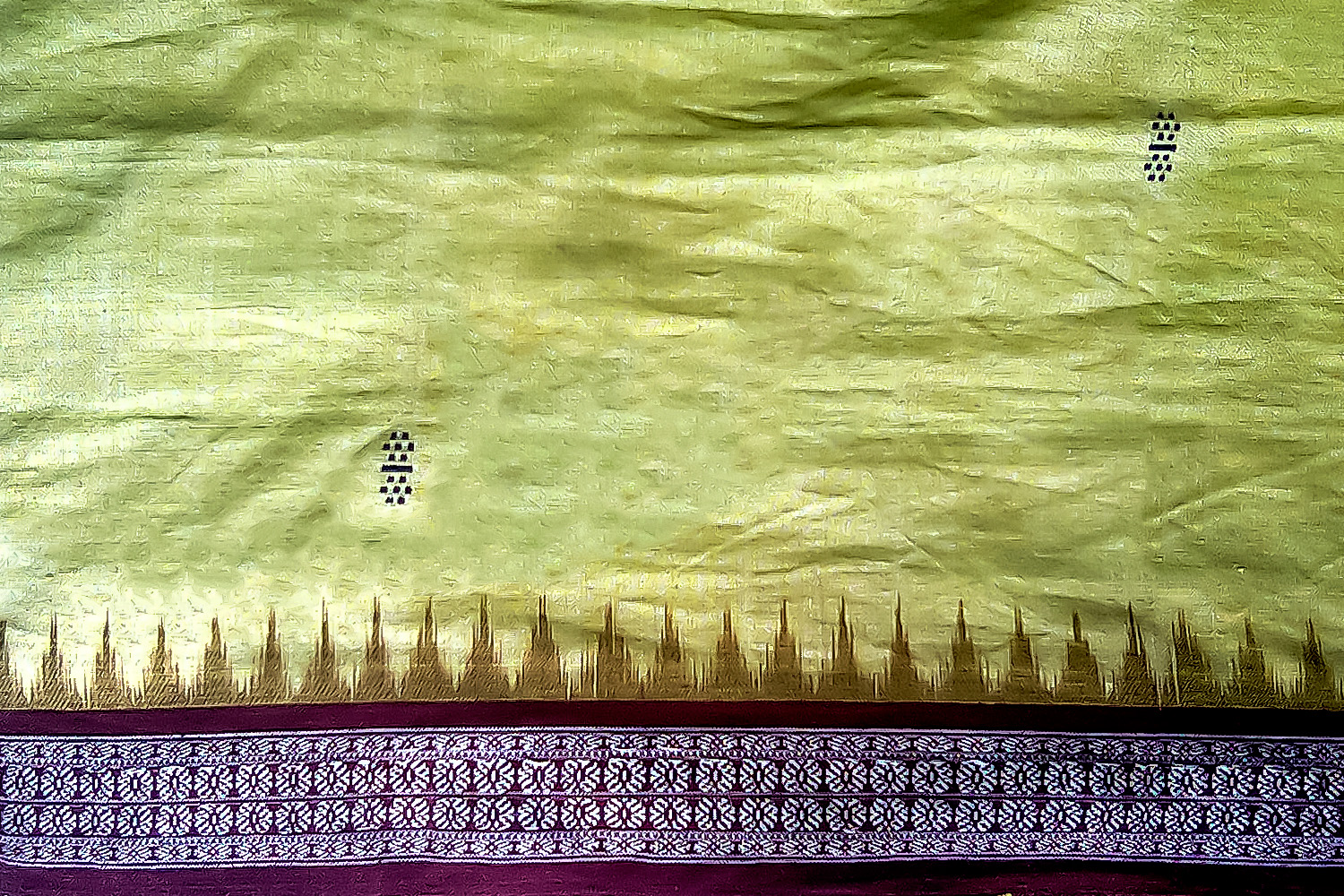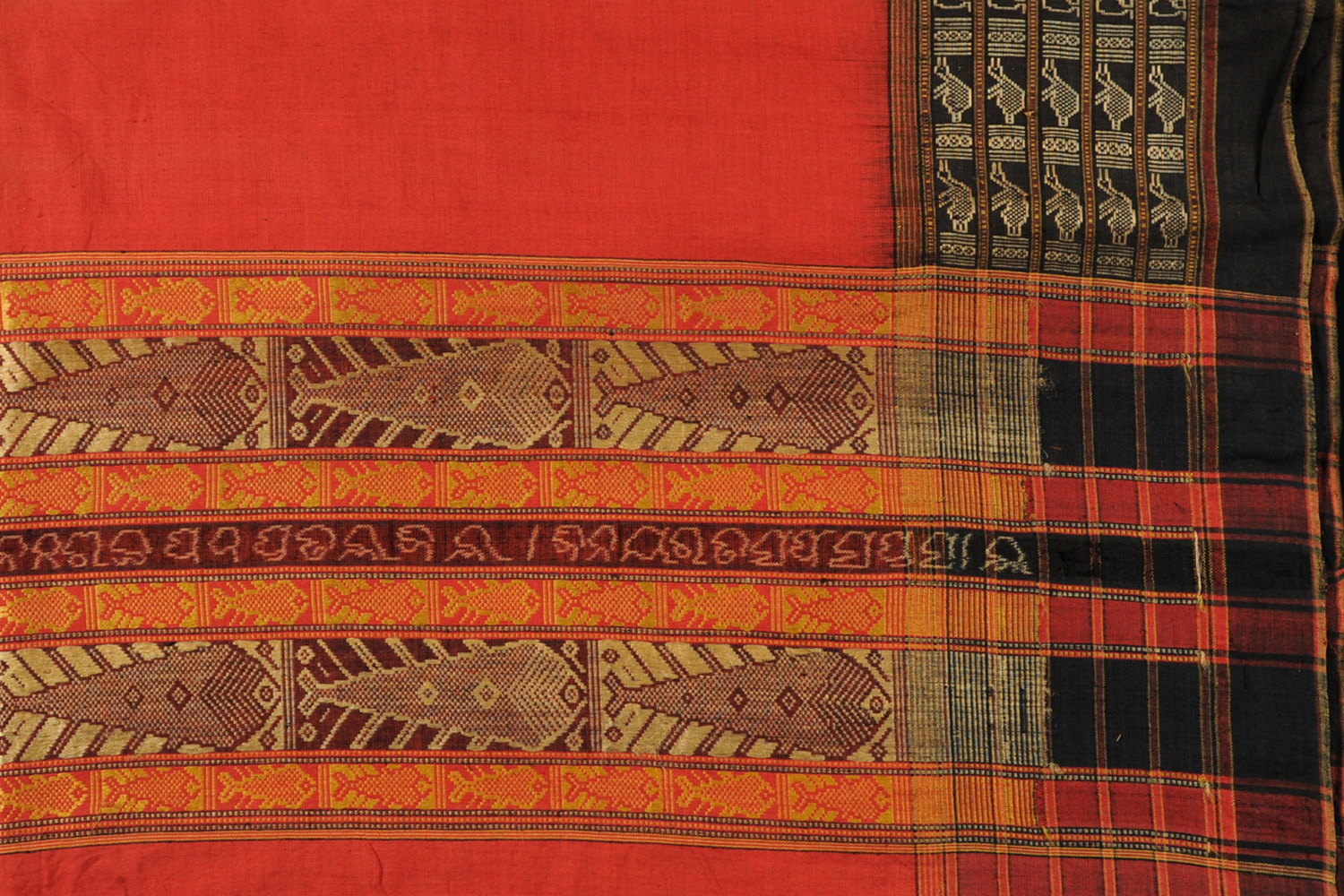ARTICLE
Bomkai Sari
Deriving its name from the village of Bomokai in Odisha, the Bomkai sari is distinguished by the use of coarse cotton, bright colours, and high-contrast borders and pallus, which typically feature heavy motif-work inspired by natural elements. Although traditionally a non-ikat textile, modern iterations of the sari include designs of Odisha bandha, the traditional ikat weave of the state of Odisha.
The village of Bomokai is located in the Ganjam district of eastern Odisha and its proximity to the coast and distinct climate are likely to have influenced the use of heavy cotton in its textiles. Although the exact origins of the Bomkai weave remain undated, it was historically woven by the Patra and Nayak communities and its clientele comprised several of the region’s influential classes, including the Sadhaba mercantile community, local rulers and members of the aristocracy. Certain types of Bomkai saris also had religious significance and were used to dress deities or draped as hangings behind idols.
The Bomkai sari was traditionally woven using cotton, and occasionally silk, on a throw-shuttle pit loom and utilised the three-shuttle technique as well as a jaala attachment. The main field was commonly of black, red or white ground and included motifs such as buta, birds atop a tree, and, historically, even checks. The borders included supplementary warp patterns and panels of motifs such as dalimba (pomegranate) and saara (grain or seed). The pallu was characterised by the use of the muhajorha technique, in which the warp yarn of the main field is broken and tied to warp yarns of different colours in the end-piece. The end-piece further contained supplementary weft designs in contrasting colours, with motifs such as rui macchi (carp fish), koinchha (tortoise), kanthi phoola (small flower), mayura (peacock), karela (bitter gourd) and damru (an hourglass-shaped drum), among others.
Bomkai saris were traditionally dyed using colours derived from natural sources, such as myrobalan, lac and ochre. In the 1930s, with the introduction of synthetic dyes, the colour palette of the textile expanded. However, by the 1970s and early 1980s, the making of these saris had declined severely until special commissions for the Vishwakarma series and the Festival of India exhibitions helped revive the textile, expanding its production beyond the Ganjam region. At the time of writing, Bomkai textiles are also woven in the Cuttack and Angul districts of central Odisha, as well as the Sonepur (now Subarnapur)-Bargarh region in western Odisha, which is renowned for its cotton ikat-weaving. In these clusters, ikat is often combined with the solid-colour technique of the traditional Bomkai design and the newer textiles are woven using finer cotton and silks. The jacquard and dobby attachments are also used alongside the jaala in the production process.
With the expansion of production clusters, newer products in the Bomkai style have also been introduced, such as dress materials and furnishings in cotton and silk. In 2010, the Bomkai sari and its fabrics received a Geographical Indications tag. However, the number of textiles being produced has dwindled as weavers face challenges in accessing financial support and a steady supply of yarn.
Bibliography
Our website is currently undergoing maintenance and re-design, due to which we have had to take down some of our bibliographies. While these will be re-published shortly, you can request references for specific articles by writing to hellomapacademy@map-india.org.









